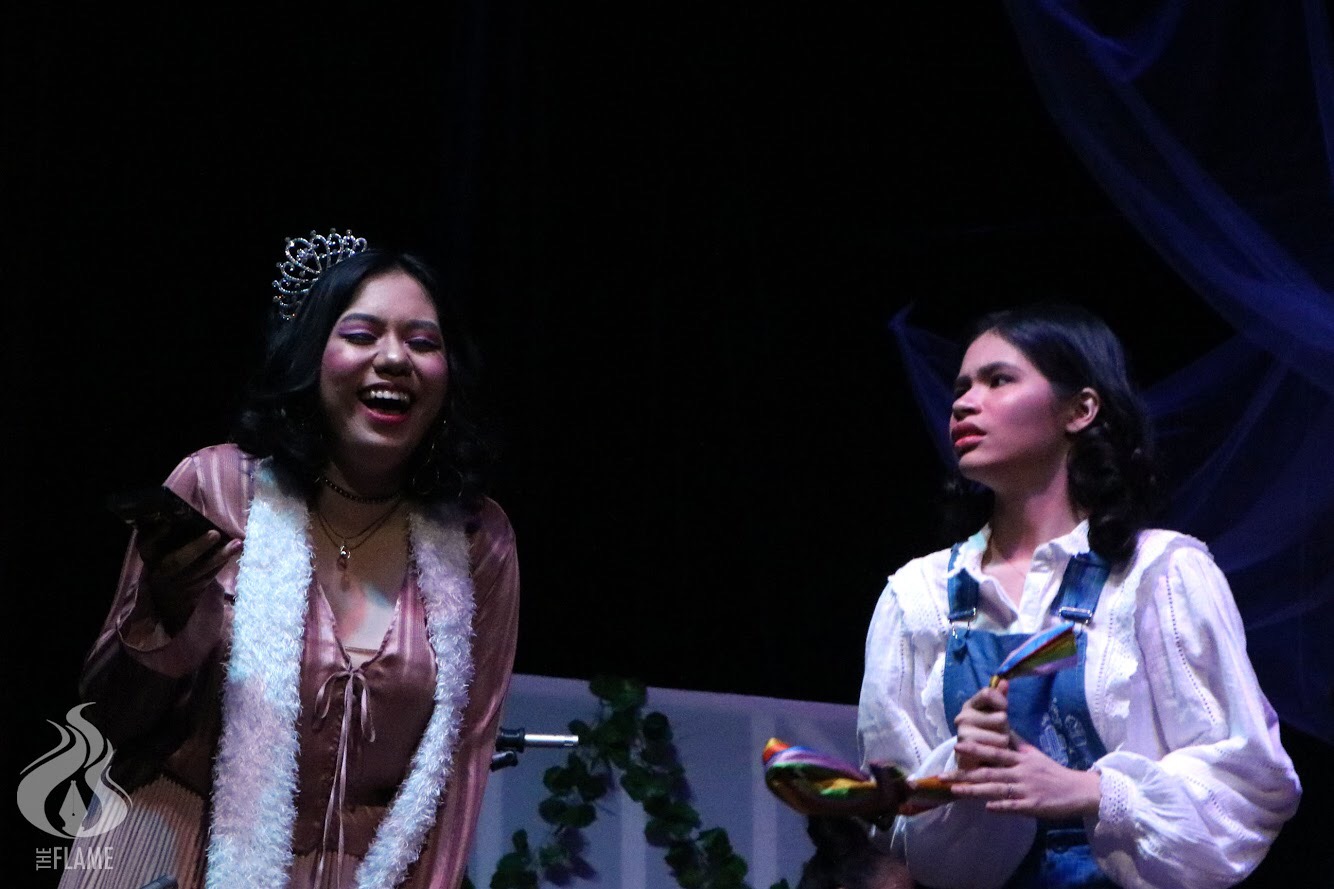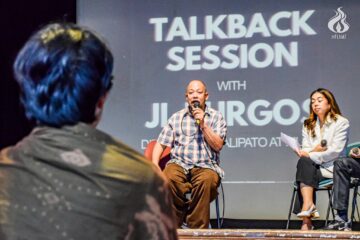By LORRAINE C. SUAREZ

THE TRANSITION to womanhood is a terrifying process. It is a road paved with physical changes: the beginning of monthly cycles, painful cramps, and budding breasts. From thereon, this road eventually leads to an exit. It is through this door that the adolescent now makes her entrance into the world as a full-fledged woman; an entrance marking her as a repressed specie and an object of desire in society.
The distant future promises a paradise that eliminates this problem in the form of a place called Edena. It is a haven for women, a utopia where they are free to choose how to live, whether it be for the sake of virtue, solidarity, or self-gratification. It is here that they worship a mysterious deity known as Yoncé (Philippe Catindig), the idol of female empowerment.
The play follows the story of Maya (Julia Del Rosario), a child who has recently bloomed into adolescence. Following the customs of Edena, she is obligated to choose from the three coteries of the city: the OG, the Freelancers, and the Wildts. Each group has a certain ideology—a metaphor for the three waves of feminism—and in exploring her choices, she comes face to face with an unexpected enemy: the patriarchy.

Presented by 4ELS2 at the Albertus Magnus auditorium on Dec. 11, Women: A Play About Women imparts the idea of how freedom can actually turn out to be a means of control. All throughout the play, the illusion of freedom is explored through the three coteries. As the story progresses, the pressure to pick one of the three is forced upon Maya, compelling her to question whether the existing system is there for her rights or repression.
The production does an excellent job with its use of colors as exhibited through the lighting schemes and costumes. Each hue characterizes a certain group: white is for the virtuous OGs, red is for the unity of the Freelancers, pink is for the fashion prowess of the Wildts, and rainbow colors are for Maya, which represents her inability to fit in with any of the groups.
The blocking is even more commendable. In every scene, each actor is always in character, preoccupied with doing something even if they are relegated to a non-speaking role or to the background. This results in a constantly changing background that creates a living scenery.
The atmosphere and emotion of every scene were highlighted by the play’s extensive soundtrack, which features a different musical accompaniment depending on the characters onstage. A fault on this aspect, however, is that the music overlaps with some of the ongoing dialogue, overpowering the low volume of the other actors.

The greatest accomplishment of this play comes from its main actor. The role of Maya is a young woman who finds the voice and courage to speak out against a false Eden. Despite her uncertainties and being treated as a madwoman, she chooses to break free from the constraints that have long caged her kind and dares to disobey even their deity, Yoncé. This is depicted in the scene where she speaks out against the coterie system of Edena—the highest point of her performance due to the relevant message of her lines.
In the end, Women: A Play About Women tackles the complexities of womanhood by promoting the idea that there is no absolute definition of a woman. It is far easier to think of them in terms of black and white, but it is through these concepts that repression begins. Instead, one must envision women, or even human beings in general, as a vast spectrum of colors. Empowerment is neither pink, red, nor white; it is a rainbow. F



